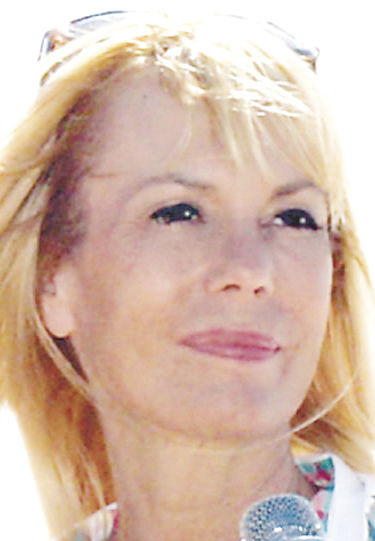Tech Matters: How to spot fake news and misinformation
- In this Dec. 9, 2016, photo, flowers and notes left by well-wishers outside a pizza restaurant in northwest Washington, D.C., are shown, where a North Carolina man fired an assault rifle multiple times as he attempted to “self-investigate” the conspiracy theory known as “Pizzagate. On Friday, Dec. 1, 2023, The Associated Press reported on stories circulating online incorrectly claiming an expert who debunked the “pizzagate” conspiracy theory has been jailed for possessing child sexual abuse images.
- Leslie Meredith

Jessica Gresko, Associated Press
In this Dec. 9, 2016, photo, flowers and notes left by well-wishers outside a pizza restaurant in northwest Washington, D.C., are shown, where a North Carolina man fired an assault rifle multiple times as he attempted to "self-investigate" the conspiracy theory known as "Pizzagate. On Friday, Dec. 1, 2023, The Associated Press reported on stories circulating online incorrectly claiming an expert who debunked the “pizzagate” conspiracy theory has been jailed for possessing child sexual abuse images.
Sadly, we’ve entered an era of untrustworthy news, even from sources we’ve long thought were trustworthy. Why? Because it’s a race among media outlets to get the story posted first to grab the attention of readers. More readers means more advertising dollars, and today’s news consumers have a lot of choices on where to source their news.
So it’s not too hard to understand why major media outlets ran with the story that Israel had bombed the Al Shifa hospital in Gaza. After thorough research by multiple parties, it became clear that the damage was from a misfired rocket from one of the terrorist groups in Gaza. We wouldn’t call that fake news, but rather insufficiently researched news that drew the wrong conclusion.
By contrast, fake news is intentionally designed to mislead readers. The rapid rise of artificial intelligence tools has only made it easier to generate text, photos, videos and even entire fake news sites. Fake news, incomplete news and misinformation can all be misleading, leaving you wondering just who you can believe. There are steps you can take to help verify what you’re reading is true.
Start by being wary of the source of a piece of news. You can put more faith in a major news outlet than in an unknown individual most of the time. Journalists who work for outlets like The New York Times and The Guardian are held responsible for the stories they write. A lone writer on Telegram or X is not. That is not to say that all citizen journalists cannot be trusted. Look them up and see what other posts they’ve made and how long they have been covering a particular topic. What is their background? How many followers do they have and how do they interact with them? I follow an international relations specialist on TikTok who does a good job of covering current conflicts, has a daily live session and has spent his career in various diplomatic positions.
Read carefully and look for coverage of the story by other outlets and individuals. Do you see inconsistencies or no similar coverage? Both would be a red flag indicating fake news. Examine videos and photos for things that don’t jibe with the story. I can’t tell you how many times posters use video game footage in posts about a conflict. While video games have gotten so good it’s hard to spot the fake, look at the comments. Usually, commenters will be quick to call out the fact that a photo or video is from a game. You can also do a reverse image search on Google to see if a photo is actually from a previous news story.

Photo supplied
Leslie Meredith
Most fake news is written to go viral with an outrageous claim or melodramatic style. Like with scam emails, the author is trying to get you to react. In this case, to share with others. If a story sounds like it came from the pages of a tabloid, you should be leery of its legitimacy. If you see pop-up ads and banners on the page, the story could just be clickbait — leave the site and look elsewhere.
You can also use one or more of the many fact-checker websites including FactCheck.org from the Annenberg Public Policy Center of the University of Pennsylvania, Fact Check from the Washington Post and Snopes, known for its myth-busting content but it also serves as a fact-checker.
If you’d like a quick start, here is an online class to consider. Poynter, the nonprofit media institute, offers a short, free course for seniors to give them the skills to spot fake news and misinformation and seek out trustworthy sources. The course includes guest appearances by Christiane Amanpour, Joan Lunden, Lester Holt, Hari Sreenivasan and Dave Jorgenson, who will share their advice as experienced journalists to help you navigate information on Google, Facebook and others. Visit poynter.org for more information.
Leslie Meredith has been writing about technology for more than a decade. As a mom of four, value, usefulness and online safety take priority. Have a question? Email Leslie at asklesliemeredith@gmail.com.




